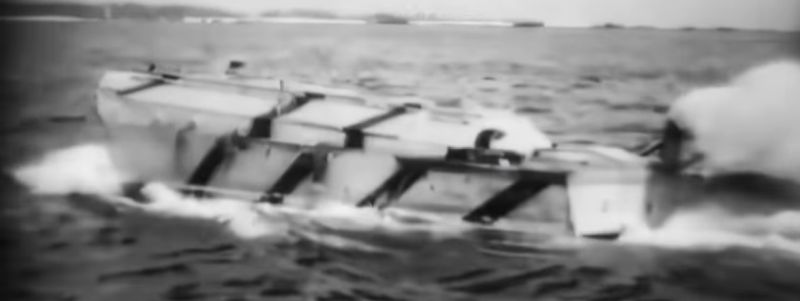
Apex boat, Operation Dragoon
Based on the recent conflicts in the Black Sea and the Red Sea, it appears highly likely that the future of maritime warfare will be shaped by the use of naval drones. This made me wonder when the first naval drones were used in combat.
To the best of my knowledge, the first naval drones used in combat were the Apex boats used in Operation Dragoon, the Allied amphibious landing in the South of France during World War II, eighty years ago last week.
These drones were modified radio-controlled landing craft, loaded to capacity with high explosives, intended to be used to clear beach obstacles and mines. The Apex boats were moderately successful yet proved at times to be almost as dangerous to the Allied soldiers and sailors as they were to the Nazi defenders.
The Apex boats were created to address a problem unique to staging landings on the Mediterranean beaches of the South of France. Unlike the beaches at Normandy, there was effectively no tide in the Mediterranean, so the beach obstacles designed to sink incoming landing craft remained constantly underwater. During the Normandy landings, Navy Combat Demolition Units (NCDU) were able to methodically clear all the obstacles off the beach at low tide. Lacking a significant tide in the Mediterranean, the NCDUs needed to find another way to clear a path through mined wooden pylons and concrete tetrahedrons that would otherwise block the landing.
The solution they settled on was the Apex boat, a standard 36′ long landing craft (LCSV) modified to be radio-controlled and packed with high explosives. Fifty-four Apex boats and 27 control boats were built for the operation.
The Apex boat drones had two configurations – male and female. The male version of the Apex was loaded with one ton of explosives, to create an initial breach in the obstacles just big enough for the following female Apex to penetrate to blow a bigger gap with its four-ton load, the maximum capacity of the LCSV.
Expectations for the Apex boat drones were relatively low. The operators of the radio controls found it difficult to steer the drones and to judge the distances of the boats off the beach. The after-action report stated that “experiments with Apex Units at Amphibious Training Group, had been very disappointing because none of the three units detonated had operated according to plan. As a result of the experiments, it was assumed that about 50% of the Apex would detonate.”
Nevertheless, the boats operated moderately well, at least initially. On the morning of August 15, 1944, the first Apex boats were launched against beach obstacles in the Baie de Cavalaire. All exploded amongst the obstacles along the left side of the landing beach. Although some gaps and mines were blown, the right side of the beach was untouched and was therefore closed after mines damaged several landing craft.
On the landing beach at Baie de Pampelonne, most Apex boats exploded against the obstacles. Nevertheless, one ran aground, and one sank. A third reversed course and turned back out to sea before exploding near Sub-chaser #1029 and severely damaging it.
In general, the gaps made were just sufficient for the landing craft to reach the beaches, and the NCDUs paddled in rubber boats to the remaining rows of obstacles to clear them away with hand-placed charges.
Things did not go as well at the landing west of Saint Raphaël, which was defended by a large offshore minefield, numerous coastal batteries, and two rows of mined concrete tetrahedrons. The Apexes were sent against the offshore obstacles but were forced back by brackets of near-misses from German batteries.
On the second attempt they pressed on under fire, but some of the explosive-laden drones appeared to stop responding to radio-control. The boats began moving about in irregular patterns as they failed to obey radio commands. Two were re-boarded and disarmed by the NCDUs, two ran aground on the beach, one ran wild and was sunk by the destroyer USS Ordronaux, while three did explode amongst the obstacles.
Their inability to clear the obstacles, along with the failure of the sea and air bombardment to neutralize the enemy artillery, led to the 142nd Infantry Regiment being landed instead at an already secured beach east of Saint Raphael later that day. It was suspected that the radio frequencies used to control the Apex boats were susceptible to jamming by the Germans and to interference from frequencies used by the invasion fleet.

you might be interested in a ground level view of Op Dragoon by a US Intelligence officer who went thru Salerno, Anzio, and Op Dragoon (Camel side) thru France and into Austria where he and his 36th Div. arrested Goering. It is beautifully written with the manuscript in famiy files that I helped get published. “Invading Hitler’s Europe” by Roswell Doughty is worth a read.